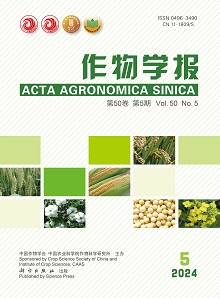The stable super high yield of broadcasting rice relies on the ordered plantation of rice. In this study, three planting methods including ordered transplanting (OT), optimized broadcasting (OB) and cast transplanting (CT) using dry-raised rice seedlings in plastic plates with 2-hole, 3-hole, and 1-hole were used with mechanical transplanting (MT) using blanket rice seedlings as control to investigate the nitrogen uptake, utilization and translocation characteristics. Ordered transplanting and optimized broadcasting rice had lower N content at the whole growing stage, lower N accumulation at critical stage for effective tillering (CS) and elongation stage (ES), and higher N accumulation after ES significantly or very significantly than CT rice, showing N accumulation in treatments was OT>OB>CT. And 2-hole and 3-hole plants kept higher N content than 1-hole plants at each stage with proper N accumulation before ES and stronger N uptake ability after ES. N accumulation and N uptake rate in treatments after heading were 2-hole>3-hole>1-hole. Nitrogen agronomic efficiency, physiological efficiency, partial factor productivity, N requirement for 100 kg, nitrogen use efficiency for biomass production, nitrogen use efficiency for grain production, nitrogen harvest index and grain yield among different transplanting ways showed the trend of OT>OB>CT and MT. N use efficiency, partial factor productivity and nitrogen harvest index (NHI) among different hole treatments had the trend of 2-hoel>3-hole and 1-hole, and N requirement for 100 kg grain 2-hoel and 3-hole > 1-hole, while nitrogen use efficiency for biomass production and nitrogen use efficiency for grain production showed the trend of 2-hoel and 3-hole< 1-hole. N content and accumulation in panicle among different transplanting ways after heading showed the trend of OT>OB>CT, while the opposite trend was shown in culm, sheath and leaf. And N content in leaf and panicle among different hole treatments was shown 2-hoel>3-hole and 1-hole and N accumulation among different hole treatments in each organ was 2-hoel >3-hole >1-hole. N transportation and transportation rate were OT>OB>CT among different transplanting ways, and 2-hoel, 3-hole<1-hole among hole treatments. Base on the above results, we conclude that ordered transplanting and optimized broadcasting rice, especially that with 2-hoel treatment, had the rational N content and accumulation at early stage, stronger N uptake ability and higher N accumulation, transportation with higher transportation ratio after heading, and high nitrogen agronomic efficiency, physiological efficiency, partial factor productivity, N requirement for 100 kg, nitrogen use efficiency for biomass production, nitrogen use efficiency for grain production and nitrogen harvest index, which is the nutritional basis for high yield of OT and OB rice.

 WeChat
WeChat
 WeChat
WeChat